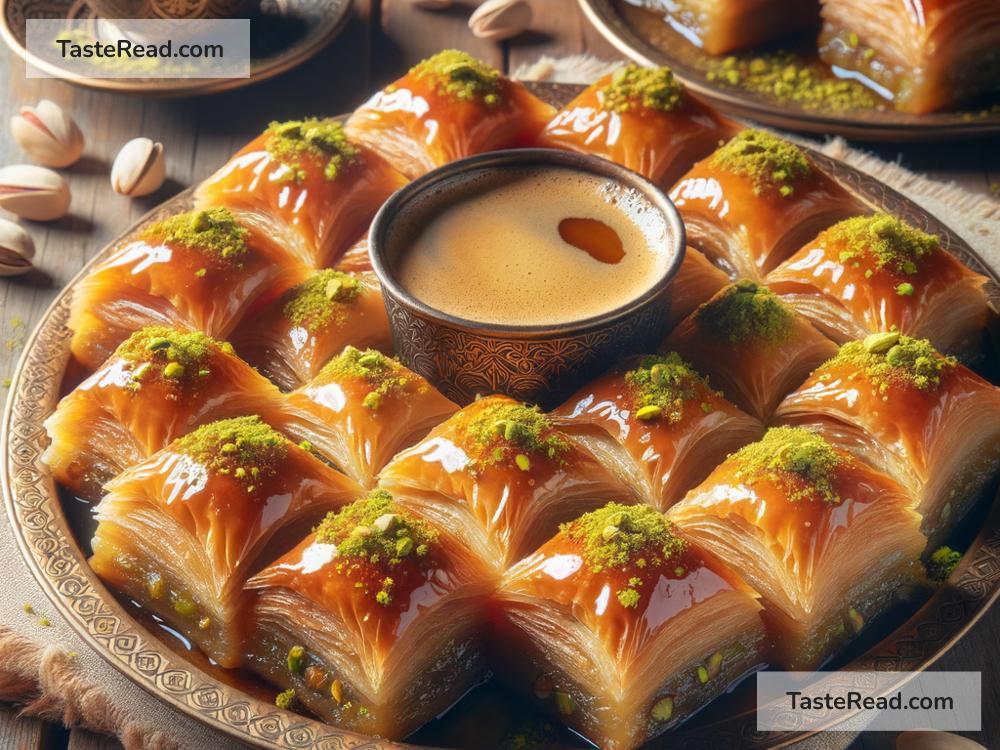Indulging in the Exquisite Layers of Lebanese Baklava
If there’s one dessert that has truly stood the test of time, it’s baklava. Famous in many regions, baklava is a sweet treat loved by dessert fans worldwide. While it has many versions and interpretations, Lebanese baklava stands out as a masterpiece. Its delicate layers, rich flavors, and balance of sweetness make it irresistible. Let’s take a closer look at this classic dessert and why it is worth savoring.
What is Baklava?
Baklava is a dessert made of thin layers of pastry, nuts, and syrup or honey. It is often associated with Middle Eastern, Mediterranean, and Balkan cuisines. Each country adds its own twist, creating recipes that reflect local tastes. Lebanese baklava, in particular, is known for its refined preparation and elegant presentation.
The Lebanese Take on Baklava
Lebanese baklava has distinct features that set it apart. While tradition is at the heart of its preparation, there is an undeniable finesse in how the layers are crafted and the flavors are balanced. The dessert typically uses filo pastry (sometimes spelled phyllo), crushed pistachios, and a fragrant syrup made with orange blossom water or rose water instead of ordinary honey. This gives Lebanese baklava a floral aroma that adds depth to every bite.
One thing that sets it apart is its restrained sweetness. Unlike overly sugary versions found in other countries, Lebanese baklava focuses on balance—allowing the nuttiness of pistachios and the lightness of the pastry to shine. This makes it a treat that can be enjoyed without feeling heavy or overwhelming.
How is Lebanese Baklava Made?
The process of making Lebanese baklava is an art that requires patience and precision. It starts with assembling the delicate filo layers. Filo pastry is incredibly thin, almost transparent. Home bakers can purchase pre-made filo sheets, but in traditional kitchens, these sheets are made from scratch. The effort to roll out the dough until it is paper-thin speaks to the dedication behind its creation.
The first layer of filo is brushed generously with melted butter, followed by another layer, and then another, until a stack is formed. Crushed pistachios are spread across the middle to create the nutty, textured filling. Then, more filo layers are added on top, each brushed with butter.
Once assembled, the baklava is cut into diamond or square shapes before being baked until golden and crisp. After baking, the dessert is drenched with syrup infused with floral essences, adding a refreshing touch and enhancing the natural sweetness. The syrup seeps into the layers, making each bite both crunchy and moist.
The Cultural Significance of Baklava in Lebanon
In Lebanon, baklava is more than just a dessert—it’s a symbol of hospitality and celebration. It is often served during holidays, weddings, and family gatherings. The act of sharing a tray of baklava brings people together, creating moments of joy and togetherness.
Baklava shops, called halawiyat, are common in Lebanese cities and towns. These establishments are respected for their dedication to creating high-quality sweets, often using age-old recipes passed down through generations. Walking into a halawiyat feels like stepping into a wonderland of flavors, with trays of glistening baklava that tempt you with their beauty.
Moreover, baklava is often offered as a gift. If someone visits your home, bringing a box of baklava is a thoughtful gesture. In Lebanese culture, food gifts symbolize care, appreciation, and the joy of sharing something sweet.
Savoring Baklava the Right Way
One of the best things about baklava is how versatile it is. You can enjoy it with coffee or tea as an afternoon treat or serve it as a dessert after meals. Lebanese baklava pairs wonderfully with bitter Arabic coffee or lightly sweetened mint tea, which offsets its richness and complements its flavors.
When eating baklava, take your time. There’s no need to rush; enjoy the crunch of the pastry, the creamy nuttiness of pistachios, and the floral sweetness of the syrup. Notice how the layers come together in perfect harmony. It’s the kind of dessert that demands to be savored, not simply eaten.
Making It at Home or Buying It Fresh
If you’re feeling adventurous, you can try making Lebanese baklava at home. Although it requires practice, the satisfaction of creating such a stunning dessert is worth the effort. Be patient with the filo dough, and make sure your syrup is infused with a light floral scent to capture the magic of Lebanese baklava.
For those who prefer to skip the work, visiting a Lebanese bakery or specialty store is always an option. Freshly made baklava is a delight, and buying from a trusted source ensures authenticity. Don’t hesitate to ask for recommendations on the best shops in your area; locals often know where to find the finest baklava.
Conclusion
Lebanese baklava is more than just a sweet treat; it’s a work of art that represents culture, tradition, and the joy of indulging in something truly exquisite. With its delicate layers, rich pistachio filling, and aromatic syrup, it’s a dessert that appeals to all your senses. Whether enjoyed at a celebration, with coffee, or gifted to loved ones, baklava is a moment to cherish.
So, the next time you crave something special, consider reaching for Lebanese baklava. Its exquisite layers remind us of the beauty found in the simplest yet most thoughtful creations. One bite, and you’ll understand why it has been loved for centuries—making every layer truly unforgettable.


